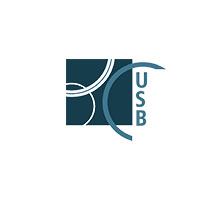Ju, Xiaojun  ORCID: 0000-0002-0025-6036
(2025).
A Visual Observation of the Age Dependency in the UBM Parameters Within the Lower Eyelid and Periocular Structures.
PhD thesis, Universität zu Köln.
ORCID: 0000-0002-0025-6036
(2025).
A Visual Observation of the Age Dependency in the UBM Parameters Within the Lower Eyelid and Periocular Structures.
PhD thesis, Universität zu Köln.

Abstract
Ultrasound biomicroscopy is a standard machine used for ophthalmic examinations, but its use on the eyelids or periocular area is less common. Our study examined 42 healthy volunteers using High-resolution ultrasound biomicroscopy (ABSOLU; Quantel Medical, France, 50MHz). We used ultrasound technology to explore the main structures of the lower eyelid, which include the capsulopalpebral fascia (CPF), the pre-tarsal orbicularis (PTO), the tarsal plate, pre-septal orbicularis (PSO), the conjunctiva complex, and the depressor orbicularis lateralis (DOL). During the examination, corresponding ultrasound images were captured, and the thickness of the layers of the lower eyelid at the primary gaze position and the up-gaze position were analyzed and measured using the ABSOLU system. The results were then statistically analyzed. At the same time, the images and data collected during the study were used to analyze the dynamic changes of the lower eyelid structure further when the gaze direction changes and its age-related variation. We collected and analyzed images of 42 volunteers taken by Ultrasound Biomicroscopy, including 20 men and 22 women (age 40.3±19.9 years old). Our study recorded different structure thicknesses of the lower eyelid in an eyeball movement in a healthy population, including the primary and up-gaze positions. We found that some structures of the lower eyelid change during dynamic eyeball movements, and the thickness of the same structure at various measurement points on the lower eyelid also varies. In terms of gender and age differences, some of the lower eyelid structures thicken with aging. Meanwhile, some parts of the lower eyelid structures in men are thicker than the corresponding structures in women.
From this study, we have drawn the preliminary conclusion that using ultrasonic biomicroscopy to safely and non-invasively examine the changes and morphology of the lower eyelid is an effective way to gain insight into the eyelid and its aging process. This technology is being used widely, enabling us to study periocular physiology and the dynamics of patients with certain diseases. In addition, it can be used to evaluate the effects of cosmetic and periocular surgery.
| Item Type: |
Thesis
(PhD thesis)
|
| Translated title: |
| Title | Language |
|---|
| Eine visuelle Untersuchung der Altersabhängigkeit der UBM-Parameter im Bereich des Unterlids und der periokulären Strukturen | German |
|
| Translated abstract: |
| Abstract | Language |
|---|
| Die Ultraschall-Biomikroskopie (UBM) ist ein etabliertes Verfahren in der ophthalmologischen Diagnostik, wird jedoch vergleichsweise selten zur Untersuchung der Augenlider oder periokularen Strukturen eingesetzt. In dieser Studie wurden 42 gesunde Probanden (20 Männer, 22 Frauen; Alter 40,3 ± 19,9 Jahre) mit hochauflösender UBM (ABSOLU; Quantel Medical, Frankreich, 50 MHz) untersucht.
Untersucht wurden die wichtigsten anatomischen Strukturen des unteren Augenlids, darunter die Kapsulopalpebralfaszie (CPF), der prätarsale Orbicularis (PTO), die Tarsalplatte, der präseptale Orbicularis (PSO), der Bindehautkomplex sowie der Musculus depressor orbicularis lateralis (DOL). Während der Untersuchung wurden standardisierte Ultraschallbilder aufgenommen, und die Dicke der genannten Strukturen in Primärblick- sowie Aufblickposition mit dem ABSOLU-System analysiert und vermessen. Die Ergebnisse wurden statistisch ausgewertet.
Dabei wurde festgestellt, dass sich einige Strukturen des unteren Augenlids während dynamischer Augenbewegungen verändern, wobei sich die Dicke derselben Struktur an verschiedenen Messpunkten unterscheiden kann. Insbesondere zeigte der PSO im Aufblick eine signifikante Reduktion der Dicke. Darüber hinaus ließ sich ein Zusammenhang zwischen bestimmten Strukturen und dem Alter der Probanden beobachten: Einige Strukturen zeigten eine altersabhängige Zunahme der Dicke. Zudem waren einzelne Strukturen bei männlichen Teilnehmern dicker als bei weiblichen.
Aus dieser Untersuchung lässt sich schließen, dass die UBM eine sichere, nicht-invasive und effektive Methode zur Darstellung der Anatomie und altersbedingten Veränderung des unteren Augenlids darstellt. Diese Technologie ermöglicht neue Einblicke in die periorbitale Physiologie und Dynamik bei gesunden Personen und könnte darüber hinaus zur Beurteilung von Erkrankungen oder zur Evaluierung kosmetischer sowie chirurgischer Maßnahmen eingesetzt werden. | German |
|
| Creators: |
|
| URN: |
urn:nbn:de:hbz:38-786096 |
| Date: |
2025 |
| Language: |
English |
| Faculty: |
Faculty of Medicine |
| Divisions: |
Faculty of Medicine > Augenheilkunde |
| Subjects: |
Medical sciences Medicine |
| Uncontrolled Keywords: |
| Keywords | Language |
|---|
| ultrasound biomicroscopy | English | | dynamic motion analysis | English | | eyelid | English |
|
| Date of oral exam: |
19 May 2025 |
| Referee: |
| Name | Academic Title |
|---|
| Ludwig Maximilian, Heindl | Universitätsprofessor Dr. med. Dr. phil. | | Tina, Schick | Privatdozentin Dr. med. |
|
| Refereed: |
Yes |
| URI: |
http://kups.ub.uni-koeln.de/id/eprint/78609 |
Downloads per month over past year
Export
Actions (login required)
 |
View Item |
 ORCID: 0000-0002-0025-6036
(2025).
A Visual Observation of the Age Dependency in the UBM Parameters Within the Lower Eyelid and Periocular Structures.
PhD thesis, Universität zu Köln.
ORCID: 0000-0002-0025-6036
(2025).
A Visual Observation of the Age Dependency in the UBM Parameters Within the Lower Eyelid and Periocular Structures.
PhD thesis, Universität zu Köln.


